When it comes to vehicle maintenance, the wheel bearing is an often-overlooked component that plays a crucial role in ensuring a smooth ride. Wheel bearings are designed to reduce friction between the wheel and axle, allowing your vehicle to roll freely. However, like any mechanical part, they can wear out over time. Recognizing the signs of a failing wheel bearing early can save you from costly repairs and potentially dangerous situations on the road. Here are some key indicators to watch out for.
- 1. Unusual Noises
- 2. Vibration in the Steering Wheel
- 3. Uneven Tire Wear
- 4. Play in the Wheel
- 5. ABS Warning Light
- 6. Increased Heat
- 7. Dashboard Warning Indicators
- 8. Difficulty in Steering
- 9. Heat and Smoke
- 10. Professional Diagnosis
- Prevention and Maintenance
- Understanding Wheel Bearing Maintenance
- 1. Regular Inspections
- 2. Proper Wheel Alignment
- 3. Quality Lubrication
- 4. Monitor Driving Conditions
- 5. Tire Maintenance
- When to Seek Professional Help
1. Unusual Noises
One of the first signs of a failing wheel bearing is unusual noise. If you hear a grinding, humming, or growling sound coming from the wheel area, it may indicate that the bearing is deteriorating. This noise often becomes louder as you accelerate and may change when you turn the vehicle. Pay attention to whether the noise is coming from the front or rear wheels, as this can help pinpoint the failing bearing.
2. Vibration in the Steering Wheel
Another common symptom of a failing wheel bearing is vibration felt through the steering wheel. If you notice that your steering wheel shakes or vibrates while driving, particularly at higher speeds, this could be a sign that your wheel bearings are worn. Excessive play in the bearing can lead to misalignment, resulting in a bumpy ride.
3. Uneven Tire Wear
Worn wheel bearings can affect your vehicle’s alignment and lead to uneven tire wear. If you notice that your tires are wearing down more on one side than the other, it may indicate a problem with the wheel bearings. Regularly inspecting your tires and checking for uneven wear patterns can help you catch this issue early.
4. Play in the Wheel
To check for play in the wheel, safely lift the vehicle and grasp the tire at the 12 and 6 o’clock positions. If you feel movement or play when pushing the tire back and forth, it could indicate a failing wheel bearing. This play can affect your vehicle’s handling and performance, making it essential to address the issue promptly.
5. ABS Warning Light
In some vehicles, a failing wheel bearing can trigger the Anti-lock Braking System (ABS) warning light on your dashboard. This happens because the wheel bearing helps support the wheel speed sensor, and if the bearing is failing, it can send incorrect signals to the ABS system. If you see this warning light, it’s advisable to have your vehicle checked by a professional.
6. Increased Heat
Wheel bearings that are beginning to fail may generate excessive heat due to increased friction. If you notice that your wheels are unusually hot to the touch after driving, it could indicate a problem. This heat can lead to further damage to the bearing and surrounding components, so it’s essential to investigate any signs of overheating.
Being proactive about vehicle maintenance is key to ensuring your safety on the road. If you experience any of these signs of a failing wheel bearing, it’s crucial to have your vehicle inspected by a qualified mechanic as soon as possible. Addressing wheel bearing issues early can save you from more significant repairs down the line and keep your vehicle running smoothly.
Stay safe and keep your ride enjoyable by being aware of these warning signs!
7. Dashboard Warning Indicators
Modern vehicles come equipped with a variety of dashboard warning lights, and a failing wheel bearing can sometimes trigger one of these alerts. If your vehicle has an onboard diagnostic system, it may register errors related to the wheel bearings that can manifest as a warning light. Always consult your owner’s manual for guidance on specific warning lights, and don’t hesitate to seek professional help if you see an unfamiliar alert.
8. Difficulty in Steering
A failing wheel bearing can lead to difficulty in steering. If you find that your steering feels unusually stiff or unresponsive, it may be due to the added friction and resistance caused by a worn bearing. This symptom can compromise your ability to control the vehicle, making it essential to address the issue promptly.
9. Heat and Smoke
In severe cases, a failing wheel bearing can become so hot that it may cause smoke to rise from the wheel area. This is typically a sign of significant damage and should not be ignored. If you notice smoke or smell burning rubber while driving, it’s crucial to pull over immediately and assess the situation. Continuing to drive in this condition could result in catastrophic failure of the bearing or even a fire.
10. Professional Diagnosis
If you suspect that your wheel bearings are failing, it’s wise to consult a professional mechanic. They can perform a thorough inspection, including a test drive and detailed examination of the wheel assembly. Using specialized tools, they can determine whether the bearings need to be replaced or if any other components are contributing to the issue.
Prevention and Maintenance
Preventive maintenance is key to extending the life of your wheel bearings. Regularly scheduled inspections, along with proper wheel alignment and tire rotations, can help detect issues early. Additionally, keeping a close eye on your vehicle’s overall performance and addressing any strange noises or handling issues right away can help you avoid more significant repairs down the road.
Your vehicle’s wheel bearings are critical for safe operation and a comfortable ride. Recognizing the signs of a failing wheel bearing early on can prevent costly repairs and ensure your safety on the road. If you experience any of the symptoms mentioned, don’t hesitate to reach out to a trusted mechanic. Being proactive about maintenance and repairs can enhance your driving experience and keep your vehicle in optimal condition for years to come.
Stay alert, stay informed, and, most importantly, stay safe on the road!
Understanding Wheel Bearing Maintenance
Maintaining your vehicle’s wheel bearings is essential for ensuring safety and performance; Regular inspections can help you catch potential issues before they escalate into costly repairs or dangerous situations. Here’s what you can do to keep your wheel bearings in top shape:
1. Regular Inspections
Schedule routine inspections with a trusted mechanic. They can evaluate the condition of your wheel bearings during regular maintenance checks, allowing them to catch any early signs of wear. Make it a habit to listen for strange sounds while driving and report any unusual noises during your next visit.
2. Proper Wheel Alignment
Misalignment can place unnecessary stress on your wheel bearings. Having your wheels aligned regularly will not only improve handling and fuel efficiency but will also extend the life of your wheel bearings. If you notice your vehicle pulling to one side, have your alignment checked immediately.
3. Quality Lubrication
Most modern wheel bearings are sealed and do not require regular maintenance, but if your vehicle has greasable bearings, ensure they are properly lubricated. Using the manufacturer-recommended grease and following the right intervals for lubrication can help prevent premature wear.
4. Monitor Driving Conditions
Driving conditions can significantly affect your wheel bearings’ lifespan. Frequent driving on rough roads or in extreme weather can accelerate wear and tear. If you often drive in such conditions, consider checking your wheel bearings more frequently to ensure they are in good condition.
5. Tire Maintenance
Regular tire rotations and maintaining proper tire pressure can also impact the health of your wheel bearings. Uneven tire wear can lead to imbalances that put additional stress on the bearings. Keeping your tires in check will contribute to a smoother ride and reduce the strain on the bearings.
When to Seek Professional Help
Even with the best maintenance practices, wheel bearings can still fail. If you notice any signs of failure—such as noise, vibration, or decreased handling—don’t hesitate to contact a professional mechanic. They have the tools and expertise to diagnose the issue accurately and recommend the appropriate repairs.
Understanding the signs of a failing wheel bearing and adhering to a regular maintenance routine can significantly enhance your driving experience. By staying vigilant and proactive, you can ensure that your vehicle remains safe and reliable on the road. Remember, a small investment in maintenance today can save you from bigger headaches and expenses tomorrow. Keep your vehicle rolling smoothly and enjoy every journey!

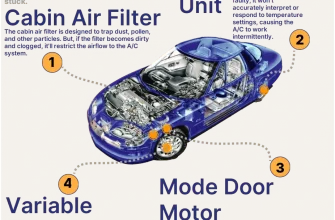
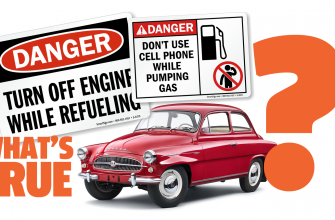
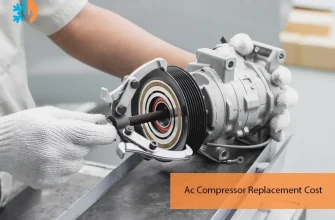


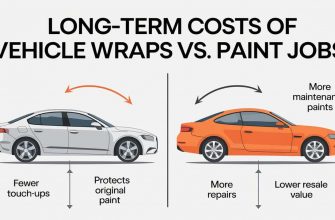
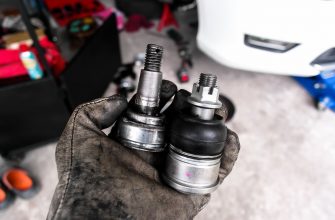

Great read! The tips on checking for play in the wheel are super practical. I feel more confident in maintaining my vehicle after reading this.
This article provides essential information on wheel bearings that every driver should know. The signs of wear are clearly explained, making it easy to understand what to look for!
I never realized how important wheel bearings were until reading this. The section on unusual noises was particularly helpful—now I’ll be more attentive while driving!